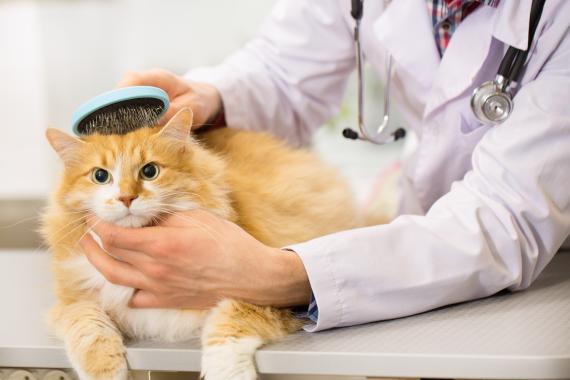
What to Do If Your Cat Bites
Cats are cherished companions, but at times, they may display aggressive behavior that leaves their owners perplexed and concerned. Whether it’s biting, attacking, or territorial aggression, understanding the causes and effectively addressing these issues is crucial for cat owners. In this comprehensive guide, we will delve into various cases of cat aggression, providing practical insights and strategies for managing and preventing such behavior.
Case 1: Setting Limits for an Ill-Behaved Kitten
Some kittens are more prone to biting than others. To prevent your cat from developing a habit of biting, it is important to adopt a kitten that has been properly weaned at around 2 or 3 months of age. Adequate weaning allows the kitten to learn boundaries from its mother and littermates. Avoid engaging in play with your hand and never allow the kitten to bite it, as this may reinforce the behavior. Instead, provide appropriate toys, such as interactive wands or balls, to redirect their biting instincts. By establishing boundaries early on, you can promote positive behaviors in your kitten and avoid future aggression-related issues.
Case 2: Managing “Petting-Biting” Behavior
“Petting-biting” behavior is a perplexing phenomenon where a cat, while being petted, suddenly turns and bites the owner. This behavior often occurs when the cat seeks comfort or warmth rather than continuous petting. Watch for warning signs, such as tail wagging, stiffening of the body, flattened ears, and dilated pupils. When you observe these signs, cease petting the cat and allow it to calm down on its own. Respecting their need for personal space can prevent future incidents of “petting-biting” behavior. It is also important to establish a consistent routine for petting sessions, gradually increasing the duration as the cat becomes comfortable and setting clear boundaries.
Case 3: Seeking Professional Help for Repeated Aggression

In some instances, cats may exhibit repeated aggression without an apparent cause. This aggression can stem from various factors, including boredom, food-related issues, defensiveness, territoriality, or underlying medical conditions. Boredom-related aggression is common among cats living in confined spaces, while inadequate or infrequent food distribution can contribute to aggression. Cats that have experienced traumatic events or perceive a threat to their territory may display defensive or territorial aggression. Additionally, certain behavioral disorders can manifest as pathological aggression. If your cat consistently exhibits aggression, it is essential to consult a professional veterinarian or animal behaviorist to identify the root cause and develop an appropriate treatment plan. They can conduct a thorough evaluation, provide behavior modification techniques, and recommend potential interventions to help manage the aggression effectively.
Preventing Cat Aggression

Alongside addressing specific cases of aggression, prevention plays a crucial role in maintaining a peaceful environment for both you and your cat. Here are some general tips to prevent aggression:
Socialization: Expose your cat to various environments, people, and animals from a young age to help them develop appropriate social skills and reduce fear-based aggression.
Play and Exercise: Engage your cat in regular interactive play sessions to fulfill its predatory instincts and expend excess energy. This can reduce boredom-related aggression.
Environmental Enrichment: Create an enriching environment with scratching posts, climbing trees, hiding spots, and interactive toys to provide mental stimulation and outlets for natural behaviors.
Consistency and Routine: Establish consistent routines for feeding, playtime, and interaction. Cats thrive on predictability, and a structured environment can promote a sense of security and reduce stress-induced aggression.
Positive Reinforcement: Reward and reinforce desired behaviors with treats, praise, and affection. Positive reinforcement can encourage good behavior and strengthen the bond between you and your cat.
Conclusion
Understanding and addressing cat aggression is essential for fostering a harmonious and loving relationship with your feline companion. By recognizing the different forms of aggression and their underlying causes, you can take proactive steps to manage and prevent such behavior. Whether it involves setting boundaries for a young kitten, handling incidents of “petting-biting,” or seeking professional assistance for repeated aggression, prioritizing your cat’s well-being and your own safety is paramount. With patience, consistency, and professional guidance, you can help your cat overcome aggression and create a peaceful environment for both of you to enjoy.
We hope this comprehensive guide has provided you with valuable insights and practical strategies for addressing cat aggression. If you have any personal experiences or additional tips to share, please feel free to leave a comment below. Together, let’s cultivate happier and healthier relationships with our feline friends.





